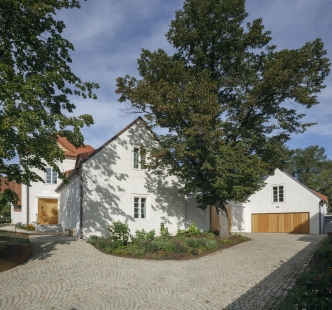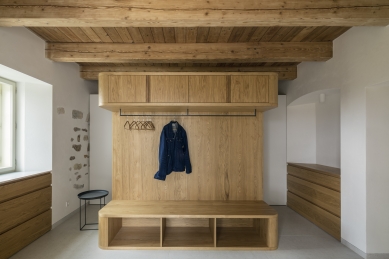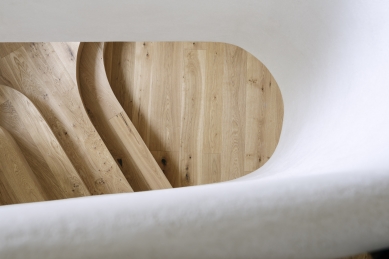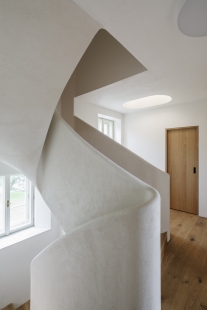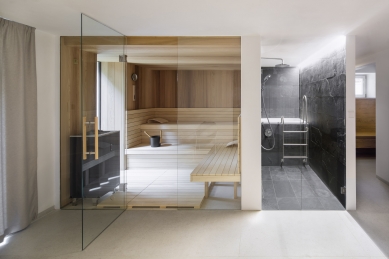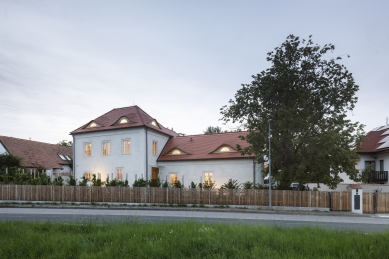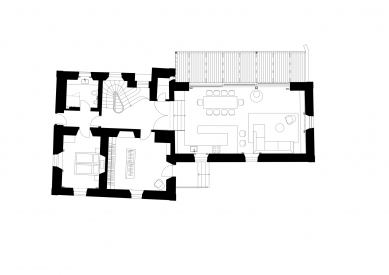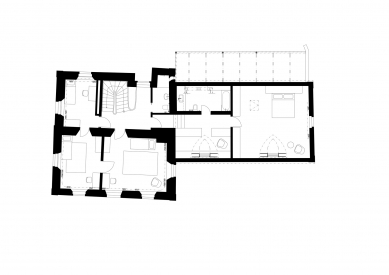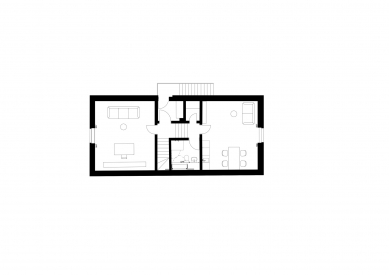
Restoration of the Špitálka Utility

The atmosphere of the original Baroque estate is revived thanks to a sensitive reconstruction. The original Baroque building, now a heritage-protected object, is one of the original vineyard houses in Prague, which has undergone significant transformation over the centuries. The reconstruction cleaned the building of recent architectural modifications and adapted it for a family villa function with a well-functioning layout.
The former vineyard house Špitálka has a long history. The first mentions come from the turn of the 15th and 16th centuries, when the valley of the Vltava River was lined with numerous vineyards. According to historical and architectural research, there were over 120 vineyards in the 16th century just in the cadastral area of Dejvice, and the estate was one of them. However, at the beginning of the 17th century, they faced decline, as the Thirty Years' War came and the climate cooled, leading to the consolidation of vineyards and the transformation of vineyard buildings into farm buildings.
The estate served agriculture during the 18th and 19th centuries and was held by the Order of the Knights of the Red Star, which sold it at the turn of the century, and during the 20th century, the house was gradually extended. A radical transformation occurred in the 1990s, when the estate was divided and only part of the original historical wall remained. All original elements like windows, doors, and roofs were replaced. The aim of the design was to change the atmosphere of the 1990s and the effort to return to the former estate. The concept is based on the construction of a new wall - changing the relationship between the inner and outer space. Thus, the wall is part of a clear boundary that relates to the atmosphere of the inner courtyards of former estates. The current historical value of the estate lies in its urban integration, which is surprising in the context of surrounding villas. The house is turned towards the street and the surrounding villas, illustrating the evolution of the place over the centuries.
The internal transformation of the house is embodied in the staircase, which winds through all the floors. Its sculptural expression dominates the shared spaces of the house and connects the inner world of the house through views. Its shaping was inspired by the Baroque curve, which is also reflected in the shaping of ceilings in the attic or the cladding in the cinema room in the basement. The second main entrance to the interior of the house was a radical opening of a wide window into the garden, which fundamentally transformed the space.
The interior of the garden then opened with an extension through a wide panoramic window, and the wall with sliding gates that separates the two worlds can change the degree of intimacy. The interior features oak wood, fabrics in shades of gray, and white paint that brings light into the space. The 16th-century masonry is at least partially recalled with a few stones in the ground floor of the house. The picket fence relates to the former estate, as does the vineyard in front of the house.
The former vineyard house Špitálka has a long history. The first mentions come from the turn of the 15th and 16th centuries, when the valley of the Vltava River was lined with numerous vineyards. According to historical and architectural research, there were over 120 vineyards in the 16th century just in the cadastral area of Dejvice, and the estate was one of them. However, at the beginning of the 17th century, they faced decline, as the Thirty Years' War came and the climate cooled, leading to the consolidation of vineyards and the transformation of vineyard buildings into farm buildings.
The estate served agriculture during the 18th and 19th centuries and was held by the Order of the Knights of the Red Star, which sold it at the turn of the century, and during the 20th century, the house was gradually extended. A radical transformation occurred in the 1990s, when the estate was divided and only part of the original historical wall remained. All original elements like windows, doors, and roofs were replaced. The aim of the design was to change the atmosphere of the 1990s and the effort to return to the former estate. The concept is based on the construction of a new wall - changing the relationship between the inner and outer space. Thus, the wall is part of a clear boundary that relates to the atmosphere of the inner courtyards of former estates. The current historical value of the estate lies in its urban integration, which is surprising in the context of surrounding villas. The house is turned towards the street and the surrounding villas, illustrating the evolution of the place over the centuries.
The internal transformation of the house is embodied in the staircase, which winds through all the floors. Its sculptural expression dominates the shared spaces of the house and connects the inner world of the house through views. Its shaping was inspired by the Baroque curve, which is also reflected in the shaping of ceilings in the attic or the cladding in the cinema room in the basement. The second main entrance to the interior of the house was a radical opening of a wide window into the garden, which fundamentally transformed the space.
The interior of the garden then opened with an extension through a wide panoramic window, and the wall with sliding gates that separates the two worlds can change the degree of intimacy. The interior features oak wood, fabrics in shades of gray, and white paint that brings light into the space. The 16th-century masonry is at least partially recalled with a few stones in the ground floor of the house. The picket fence relates to the former estate, as does the vineyard in front of the house.
OVA
The English translation is powered by AI tool. Switch to Czech to view the original text source.
0 comments
add comment



